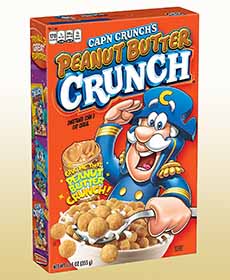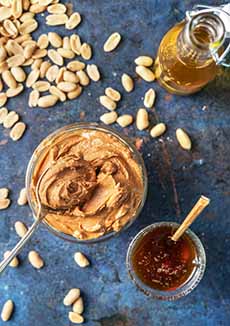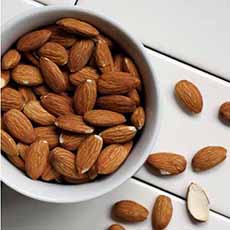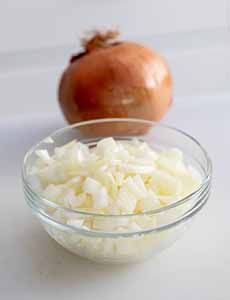| Good Eggsjustify” valign=”top”>
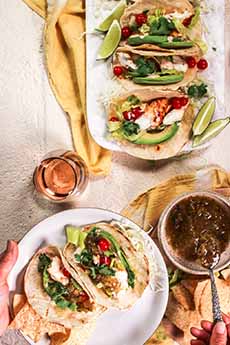
[1] These fish tacos are made with halibut, but you can substitute your fish of choice. The recipe is below (photo © California Wine Institute).

[2] You can layer on flavor with fruits from avocado and grapefruit to mango and pineapple (photo of ahi tuna tacos © Vital Choice).

[3] You can dice the avocado or serve it in slices (photo © Avocados From Mexico).
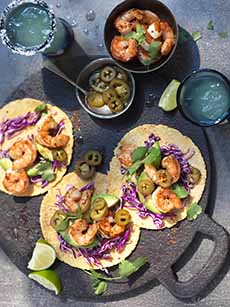
[4] Feeling flush? Add some shrimp tacos to the menu (photo © Rio Luna).
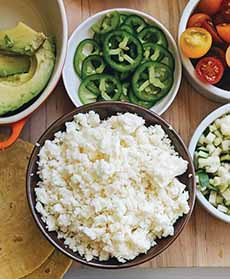
[5] Crumbled cotija cheese and other toppings (photo © Cacique Foods | Facebook).

[6] Grapefruit segments are a delicious complement to fish tacos. Here’s how to segment a grapefruit (photo © Vegelicacy).
|
|
It’s taco time! January 25th is National Fish Taco Day. It’s a new holiday, created by Rubio’s Coastal Grill in 2018. January 25th marks the day that Rubio’s founder Ralph Rubio introduced the fish taco at his restaurant, founded in 1983 in San Diego—essentially introducing fish tacos to Southern California and creating a craze.
He discovered fish tacos on a college trip to Baja, Mexico in 1973. Fish tacos had been around for…as long as tacos had been made there. But they weren’t known north of the border.
Rubio found makeshift stands everywhere were selling fish tacos. After a few years of enjoying them on his vacations, Ralph thought that maybe someday, he could make fish tacos in the U.S.
He asked the cook at his favorite stand for the batter recipe: flour, mustard, garlic, oregano, pepper, water.
Finally, in 1983, Rubio was able to open his restaurant in San Diego, setting off a demand for fish tacos that’s still going strong.
> October 4th is National Taco Day.
> March 21st is National Crunchy Taco Day.
March 31st is Día del Taco in Mexico.
> The history of tacos.
IT’S EASY TO CREATE A DIY FISH TACO BAR
How about inviting friends for a fish DIY taco bar. Line up all the condiments and let guests build their ideal fish tacos.
This recipe, from Discover California Wines, suggests halibut, but tuna, flounder, cod, or shrimp are also delicious. There are also less expensive fillets—ask your fishmonger for recommendations.
You can use any kind of fish for these tacos, or shrimp if you prefer. Pacific halibut is lean, with thick flakes, and easy to grill.
Ideally, choose a fish that’s sustainably fished or farmed. Seafood Watch, a project of the Monterey Bay Aquarium, can steer you to the best choices in your area.
For a wine pairing with fish tacos: California Sauvignon Blanc or California rosé.
And Margaritas, of course!
RECIPE: DIY TACO BAR
For 4 Tacos
Scant ½ teaspoon whole cumin seed or ground cumin
¾ teaspoon sea salt
Scant ½ teaspoon paprika
1 pound skinless Pacific halibut fillet, preferably in 1 piece
Olive oil
1 heart of romaine, dark green outer leaves removed
1/3 cup crema (Mexican-style sour cream) or sour cream
Canned chipotle chile en adobo or chipotle hot sauce, optional
8 corn tortillas
16 cherry tomatoes
1 small avocado, halved, pitted, and sliced lengthwise
Coarsely chopped cilantro
Salsa verde, store-bought or homemade
Pico de gallo or other favorite red salsa
Optional: finely minced chipotle chile or hot sauce
Taco Toppings For The Toppings Bar
Set out as many of these as you like (some duplicate those in the recipe).
Chopped scallions
Crema/sour cream
Crumbled cotija cheese
Diced avocado
Diced mango or pineapple
Diced tomato
Grapefruit segments
Pickled jalapeños
Lime wedges
Shredded lettuce or red cabbage
Sliced olives
Sliced radishes
Sliced red onion
2-3 types of salsa (green, red, peach or other fruit)
Preparation
1. TOAST the cumin. If using whole cumin seed, toast it in a small dry skillet over medium heat until it darkens and becomes fragrant. Let cool, then pound fine in a mortar or grind in a spice grinder.
2. COMBINE the cumin, salt, and paprika in a small bowl. Brush the fish all over with olive oil, then season with the spice mix. Refrigerate on a plate for 30 minutes.
3. PREPARE a hot charcoal fire or preheat a gas grill to high.
4. CUT the romaine in half lengthwise, then slice thinly crosswise. Set aside. Put the crema in a small bowl. Whisk in enough cold water to make it thin enough to drizzle. If desired, whisk in finely minced chipotle chile or hot sauce to taste.
5. WRAP the corn tortillas in aluminum foil or a clean kitchen towel. Bring an inch of water to a boil over high heat in the bottom of a steamer. Put the tortilla package in the steamer basket, cover, and steam for 1 minute. Then turn off the heat and let stand for 10 minutes.
6. TOSS the cherry tomatoes in a small bowl, with enough olive oil to coat them lightly. Season with salt. Put them on a small heatproof stainless grill tray or other heatproof baking dish and set them on the grill directly over the flame. Cook until the tomatoes are sizzling and lightly charred, about 3 minutes. Set aside.
7. PLACE the halibut on the grill rack and grill without turning until the flesh just flakes, 8 to 10 minutes, depending on thickness. Transfer to a platter and divide the fish into 8 pieces of roughly equal size.
8. ASSEMBLE the tacos. Put 2 hot tortillas on each of 4 plates. Top each tortilla with some of the shredded romaine, then with a piece of fish. Divide the tomatoes and avocado slices among the tacos. Drizzle the crema over the fish, top with cilantro, and put a lime wedge on each plate. Serve immediately, passing the salsa verde separately.
OR…for a DIY Taco Bar, just hand the fish in tortillas without any toppings, and let people garnish their own.
|









